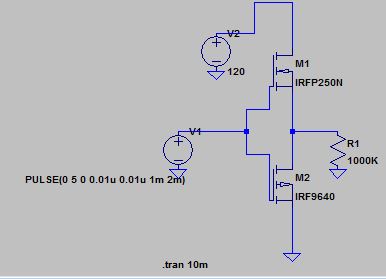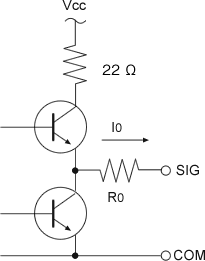You are looking for information on the topic “totem pole vs push pull”. dongtienvietnam.com will gather information to answer your questions in this article. Please read this article to the end to find the information you want to see. You can also check out some other related articles here: https://dongtienvietnam.com/category/wiki/ Totem Pole output, Push-pull output, Totem pole driver for MOSFET, Push pull circuit, Output encoder, Line driver output.
View information about the totem pole vs push pull
Information about this question
- Question: totem pole vs push pull
- Time: Asked 216 hours ago
- Modified: Asked 23 minute ago
- View: 8222
totem pole vs push pull
Totem pole and push-pull are two different types of output stages in electronic circuits.
A totem pole output stage is a type of complementary-symmetry metal-oxide-semiconductor (CMOS) output stage used to drive capacitive loads such as MOSFET gates or transmission lines. It consists of two complementary transistors, one N-channel and one P-channel, connected in a push-pull configuration with their sources connected together and their drains connected to the output node. The output node is then capacitively coupled to the load. The totem pole output stage has high speed, high drive capability, and low power consumption.
A push-pull output stage is a type of amplifier circuit that is commonly used in audio power amplifiers, voltage regulators, and other applications where a high output power is required. It consists of two transistors, one PNP and one NPN, connected in a push-pull configuration. The output signal is taken from the junction of the two transistors. The push-pull output stage has high output power, high efficiency, and low distortion.
In summary, the main difference between totem pole and push-pull output stages is their application. Totem pole output stages are typically used in digital circuits to drive capacitive loads, while push-pull output stages are commonly used in power amplifiers and voltage regulators to deliver high output power.
Watch videos related to “totem pole vs push pull”
What is Totem pole MOSFET gate driver? Totem pole MOSFET gate driver working | Push pull gate driver
Images related to totem pole vs push pull
Found 46 totem pole vs push pull related images.





Totem Pole output
A Totem Pole output is a configuration of two transistors in a push-pull arrangement, used in digital circuits as a high-speed output driver. It can drive high capacitive loads and provide fast rise and fall times. The totem pole output consists of an NPN transistor and a PNP transistor connected in a common emitter configuration, with their collectors connected together to form the output.
When the input is low, the NPN transistor is off, and the PNP transistor is on, pulling the output to a high voltage level. When the input is high, the NPN transistor is on, and the PNP transistor is off, pulling the output to a low voltage level.
The totem pole output is commonly used in digital logic circuits such as TTL (Transistor-Transistor Logic) and CMOS (Complementary Metal-Oxide-Semiconductor) logic gates, as well as in microcontrollers and other digital devices. It is capable of driving capacitive loads of up to several hundred picofarads and can switch at speeds of tens of megahertz.
Push-pull output
A push-pull output is a type of electronic circuit configuration used in power amplifiers and other applications where high output power is required. It consists of a pair of transistors (or other amplifying devices) that work together to amplify an input signal.
In a push-pull output, one transistor amplifies the positive half of the input signal, while the other transistor amplifies the negative half. The outputs of the two transistors are then combined to produce the final amplified output signal.
The advantage of using a push-pull output is that it allows for greater efficiency and reduced distortion compared to other output configurations. This is because each transistor is only amplifying half of the input signal, which reduces the amount of heat generated and the amount of distortion introduced into the signal.
Push-pull outputs are commonly used in audio power amplifiers, as well as in other applications where high power output is required, such as motor control circuits and switching power supplies.
You can see some more information related to totem pole vs push pull here
- Difference between Push-Pull and Totem-Pole
- CÁC LOẠI TÍN HIỆU ĐẦU RA CỦA ENCODER (HAY BỘ MÃ …
- What is a Totem Pole Output? – Dynapar Encoders
- (PDF) Push-Pull Totem-Pole RF Power Amplifier with Reactive …
- can someone explain the output types “push-pull” “totem pole …
- Portable Data Recorder FAQ – What is Totem-pole output?
- Push–pull output – Wikipedia
- What are “Push Pull” and “Totem Pole” outputs? Why don’t …
Comments
There are a total of 499 comments on this question.
- 1025 comments are great
- 257 great comments
- 82 normal comments
- 192 bad comments
- 23 very bad comments
So you have finished reading the article on the topic totem pole vs push pull. If you found this article useful, please share it with others. Thank you very much.
